At Least One Dead After Speeding New Jersey Transit Train Crashes Into Hoboken Station
NJ Transit train approached station in Hoboken at 3 times typical rate of speed, sources say
HOBOKEN (WABC) --
The
New Jersey Transit train that crashed Thursday approached the station
at three times the typical 10 mph approach speed, sources tell
Eyewitness News.The National Transportation Safety Board has sent a team of investigators to the scene of the crash in Hoboken, and the Federal Railroad Administration will also be investigating.
Pictures showed the violent force in which the passenger filled train struck the terminal platform.
The damage, according to one investigator, suggests the brakes failed or the engineer never applied them.
We've also learned there was no automated safety system, called positive train control, to stop the runaway train.
"PTC has been one of our priorities," said NTSB Vice-Chairman Bella Dinh-Varr. "We know that it can prevent accidents. As to whether it is involved in this accident, that is definitely one of the things we will look at carefully."
A lack of positive train control was cited as a contributing cause in a 2011 PATH train crash into a track bumper stop.
Investigators will also look at a similar accident in 1985 when a NJ Transit train coming into the same station as Thursday's crash failed to stop, resulting in 67 people injured.
"You've investigated a lot of accidents, what does your gut tell you?," we asked former train accident investigator James Sottile.
"The engineer was possibly incapacitated and could not control the train until it hit bumper block," said Sottile.
A source close to the investigation goes a step further, telling us a medical emergency is at the top of their list of probable causes.
Two data recorder boxes will show whether the engineer was hitting the throttle or applying brakes in the seconds before the crash.
But what upsets the former investigator is the absence of an automatic braking system that could have stopped the train when it started speeding into the terminal.
"I've investigated several accidents on NJ Transit and they never upgraded their system," said Sottile.
U.S. railroads are under government orders to install the system called positive train control, but the work has gone more slowly than expected. The deadline has been repeatedly extended and is now Dec. 31, 2018.
Last month, the Federal Railroad Administration said New Jersey Transit had a lot of work yet to do on installing the necessary equipment. New Jersey Transit responded that the report didn't reflect the work it had accomplished.
============
By ELI ROSENBERG and EMMA G. FITZSIMMONS
SEPT. 29, 2016
Train Crashes Into New Jersey Station. Speed is a Factor in the Crash.
A New Jersey Transit commuter train crashed into the station at Hoboken, N.J., on Thursday. Video shot by witnesses shows the damage moments after the crash. Publish Date September 29, 2016. Photo by Pancho Bernasconi/Getty Images.
A commuter train crashed at a station in northern New Jersey during the Thursday morning rush, killing at least one person and injuring about 100 people, a number of them seriously, the authorities said.
“There are fatalities,” said a senior transportation official who did not want to be identified because he was not authorized to speak publicly. “There are a significant number of injuries. The train was going very fast. There are structural concerns about the facility.”
Jim Smith, a spokesman for New Jersey Transit, confirmed that an accident involving a New Jersey Transit train had occurred at the train station in Hoboken.
Rail service was suspended into and out of the station. Local buses and ferries were accepting train tickets in light of the accident.
Jason Danahy was on the train, on the Pascack Valley line, that crashed on Thursday morning. He said the train was filled with commuters and pulling into the station when it abruptly came to a halt. Slide Show
 “From the fifth car, it felt like a major skid,” he said. “A creaking noise and a skid. I was lucky to be on the fifth car.”
“From the fifth car, it felt like a major skid,” he said. “A creaking noise and a skid. I was lucky to be on the fifth car.”When he got off the train, it was chaotic in the station.
“I saw bloody noses,” he said. “I saw people crying.”
Ben Fairclough, 35, said he was transferring at the station when he saw the derailed train, which was blocking part of the terminal.
“There were wires down, water pouring from the ceiling, the roof had collapsed, and there was people climbing out of windows of the train,” he said.
He said one person appeared to be unconscious on the ground. Others were bloody, he said.
“Cars drive into houses,” he said. “This was a train that drove into the terminal.”
A spokesman for Care Point Health said that four patients had been transported from the station to Hoboken University Medical Center, with more expected.
Matthew Lehner, a spokesman for the Federal Railroad Administration, said the agency was aware of the crash and had investigators on their way.
Speed is a factor in the crash based on the accounts of many witnesses.
=====
Commuter Train Crashes Into Hoboken, New Jersey, Station, Killing 3: Officials.
Speed is a factor in the crash based on the accounts of many witnesses.
by Jay Varela, Emmanuelle Saliba and Erik Ortiz
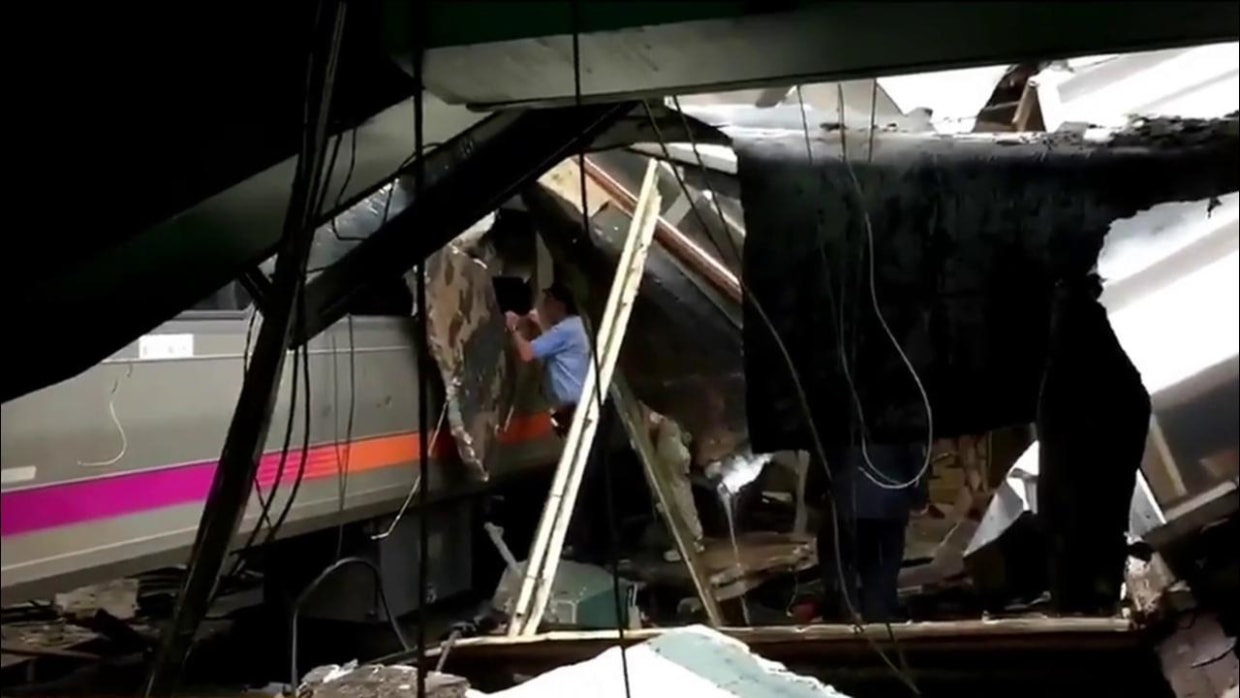
Special Report: Commuter Train Crashes in Hoboken, N.J. 5:27
A commuter train plowed into a platform inside New Jersey Transit's Hoboken terminal during the Thursday morning rush-hour, killing at least three people and injuring more than 75, officials said.
Witnesses reported seeing bruised and bloodied passengers, including one woman pinned underneath concrete, after the crash occurred just before 9 a.m. ET inside the busy station.
The Regional Medical Examiner's Office in Newark and the Jersey City Medical Center confirmed the fatalities and between 75 to 100 injuries.
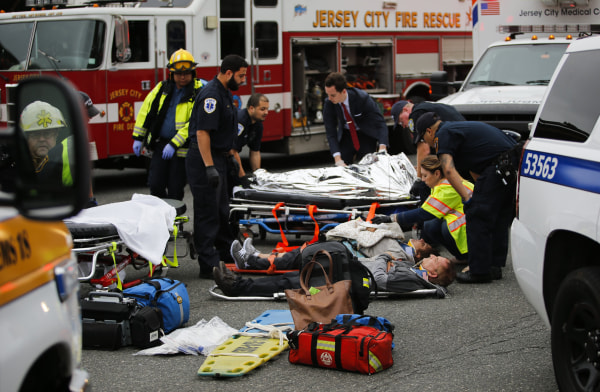
People are treated for their injuries outside after a NJ Transit train crashed in to the platform at Hoboken Terminal on Sept. 29, 2016. Eduardo Munoz Alvarez / Getty Images
The Hoboken terminal, located across the river from Lower Manhattan, is one of the busiest in the greater New York City area, with an estimated 50,000 commuters passing through every day. The trains do not have seat belts.
Photos taken from the scene and posted on social media showed major damage to the more than century-old station, with part of its roof collapsed and mangled steel and shattered glass on the ground.
The train originated from Spring Valley, New York, on the Pascack Valley line and was expected to arrive in Hoboken at 8:38 a.m. The accident occurred at 8:45 a.m. on track five, a NJ Transit spokeswoman said.
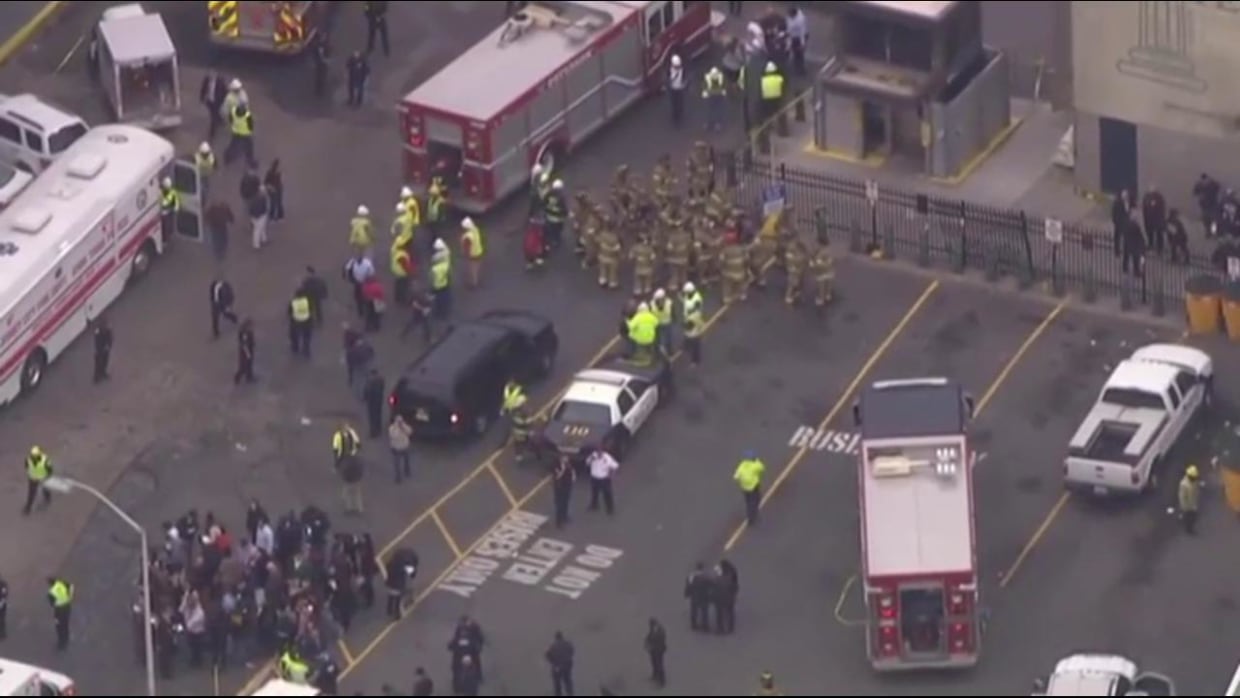
Passenger: 'People jumped through the windows' 4:38
A passenger, Bhagyesh Shah, said he was standing in the back of the second train car when it smashed through the platform and hit a couple of pillars, which caused the ceiling to rain down.
"It was for a couple seconds, but it felt like an eternity," Shah said. "I saw a woman pinned under the concrete. A lot of people were bleeding, one guy was crying."
Shah said the passengers in the second car broke the emergency windows to get out.
He added that the train, which had come from the Secaucus Junction station, was crowded — especially in the first and second cars because they give the easiest access to the terminal.
Another passenger, Steve Mesiano, told MSNBC that the crash sounded like a "huge, huge bang, and the lights went off." He was in the second train car, and said he saw the roof of the first car collapse.
When he got out, Mesiano saw bloodied passengers everywhere.
"There was blood on the floor," he said.
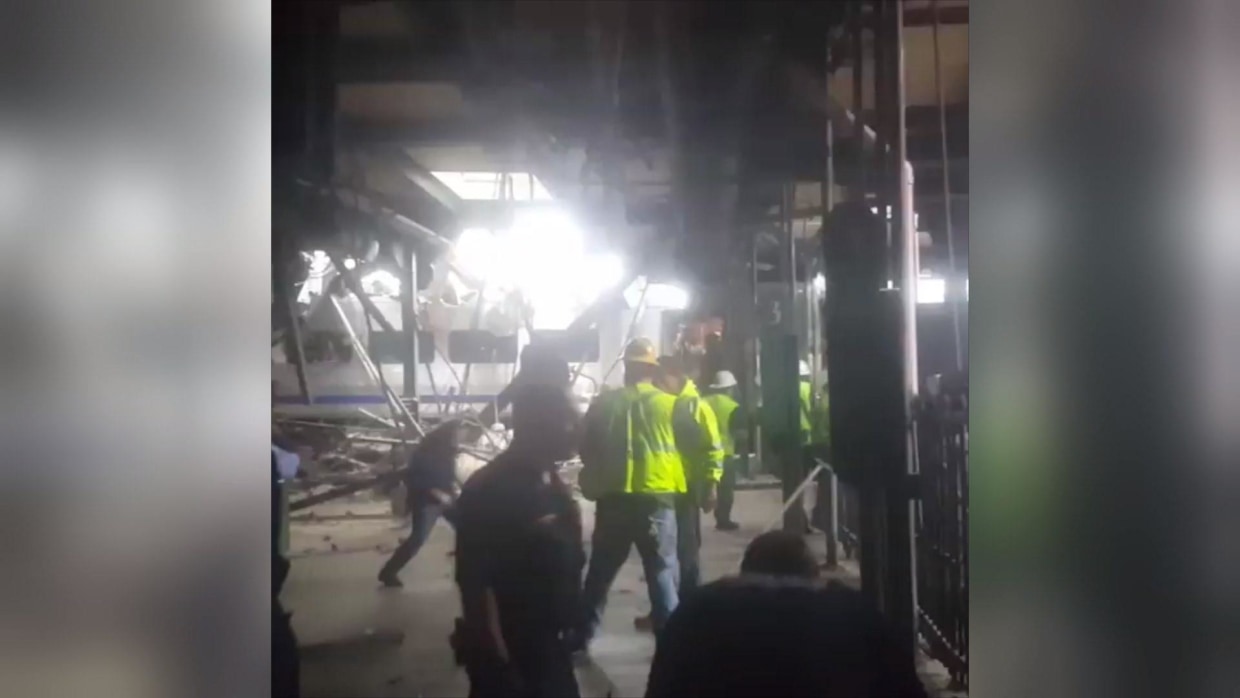
Hoboken Commuter Train Crashes into Terminal, Killing at Least Three 0:19
Nancy Bido, who was sitting in the middle of the train, told NBC New York that it felt like they were "going really too fast." She hit her head on the person in front of her as the train lurched forward.
"Everybody was pretty shaken up and upset," said Bido, adding that she was waiting to be taken to one of three hospitals in the area treating people.
Rail and PATH service in Hoboken was immediately suspended, and the National Safety Transportation Board told NBC News it was sending teams to investigate.
Kitty Higgins, a former NTSB board member, said the review will focus on what caused the train to pull into the station without slowing down.
"Why that happened, we obviously have to find out. Was there something that happened to the driver, was there an equipment failure we don't know [about] yet? That's what will be looked at," she told MSNBC.
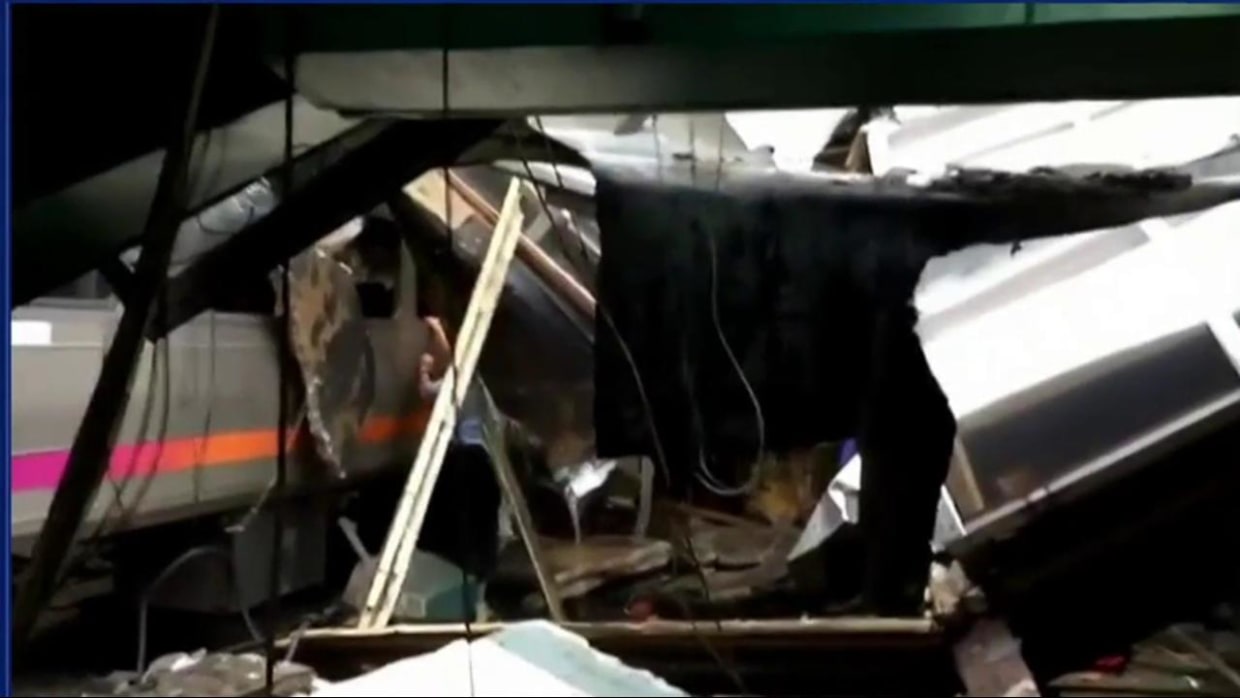
NJ train crash 'isn't a deliberate act' 1:57
The comprehensive probe will look at all factors, including the condition of the train tracks and the recent sleep patterns of the engineer, according to another former NTSB board member, John Goglia. Investigators will examine data from the event recorder, the train's black box.
"The event recorder's going to tell us what the engineer was doing as he approached that station. We will be able to tell if he, in fact, slowed down, if he applied brakes, and how much he applied," Goglia said.
While the investigation is in its preliminary stages, there was no initial sign of terrorism or that it was a deliberate act, two local law enforcement officials said.
The Hoboken station — a historic facility and NJ Transit's fifth-busiest — was the site of another crash on a different train line that left more than 30 hurt in 2011.





